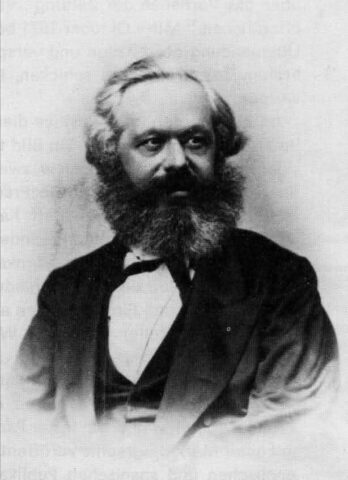Picture: Workers in Shanghai during the 1922 seamen’s strike.
‘Karl Liebknecht Day in China’ from International Press Correspondence. Vol. 2 No. 38. May 19, 1922.
At the beginning. Formed in July, 1921 this article claims that the Karl Liebknecht Day commemorations held in Guangzhou, Beijing, and Shanghai on January 15, 1922 it reports on were the first public manifestations of the Chinese Communist Party. Participants included some of the 500,000 maritime workers then on strike.
‘Karl Liebknecht Day in China’ from International Press Correspondence. Vol. 2 No. 38. May 19, 1922.
China! When we heard this word in our childhood, we imagined a fantastic country; the land of the mandarins and temples, of the hundred thousand gods and the millions of people, of gigantic towns on the plains and the rivers; the land of the calm philosopher Kon-fu-tse and of great wars and conquerors- a strange, mysterious world. Well, much of this romance has disappeared today. When we report of China now, we speak of capitalist revolution and a petty bourgeois republic, of English-American-Japanese imperialism, of mines and railway concessions, of child labor, and of the struggle of the juvenile proletariat. A gigantic transformation is going on in the oldest country of the world, a mighty struggle of two worlds. And nothing can prove as impressively the power of this transformation and at the same time the immense force of Communism as a short report of the South Chinese newspapers on the Liebknecht-Luxemburg Day of the Young Communist International in China. The press of Southern China reported:
“On January 15th the Young Socialist League as a “Marxian Club” and the “Mutual Aid” called a memorial meeting for Karl Liebknecht and Rosa Luxemburg in Canton at the hall of the Kwang-si Guild (the guilds in China are workers’ and artisans’ corporations similar to those existing in the Middle Ages). The meeting was attended by 400 workers; half of whom were sailors on strike and 500 were vineyard peasants [the numbers don’t make sens-R.N.]. The meeting expressed its veneration for the murdered comrades, whose pictures adorned the walls of the hall. After the meeting the workers commenced a parade through the streets. Many thousands of leaflets with the title “To the Youth on Liebknecht Day” were distributed among the masses. In spite of stormy and rainy weather the demonstration took place with great enthusiasm.”
In explanation we must add that the Communist Party of China and the Young Socialist League, although working illegally, were formerly more Marxian Clubs. The vanguard of the Chinese proletariat has been recently engaged in its first great mass action, the Hong-Kong seamen’s strike. This strike was supported by sympathy strikes of the Chinese sailors on the rivers, the transport workers and others; a total of 500,000 workers were on strike. Moreover, the workers expressed their sympathy with the strikers by boycotting all goods transported by scabs, by demonstrations and, furthermore, by financial assistance of the part of the trade-unions.
The Liebknecht Day of 1922 was the first public appearance of our young Chinese comrades, and the first Liebknecht anniversary celebration in China. Under the leadership of the Young Communist International demonstrations also took place in Pekin and Shanghai on January 15th.
International Press Correspondence, widely known as”Inprecorr” was published by the Executive Committee of the Communist International (ECCI) regularly in German and English, occasionally in many other languages, beginning in 1921 and lasting in English until 1938. Inprecorr’s role was to supply translated articles to the English-speaking press of the International from the Comintern’s different sections, as well as news and statements from the ECCI. Many ‘Daily Worker’ and ‘Communist’ articles originated in Inprecorr, and it also published articles by American comrades for use in other countries. It was published at least weekly, and often thrice weekly. The ECCI also published the magazine ‘Communist International’ edited by Zinoviev and Karl Radek from 1919 until 1926 monthly in German, French, Russian, and English. Unlike, Inprecorr, CI contained long-form articles by the leading figures of the International as well as proceedings, statements, and notices of the Comintern. No complete run of Communist International is available in English. Both were largely published outside of Soviet territory, with Communist International printed in London, to facilitate distribution and both were major contributors to the Communist press in the U.S. Communist International and Inprecorr are an invaluable English-language source on the history of the Communist International and its sections.
PDF of full issue: https://www.marxists.org/history/international/comintern/inprecor/1922/v02n038-may-19-1922-Inprecor.pdf
![]()




